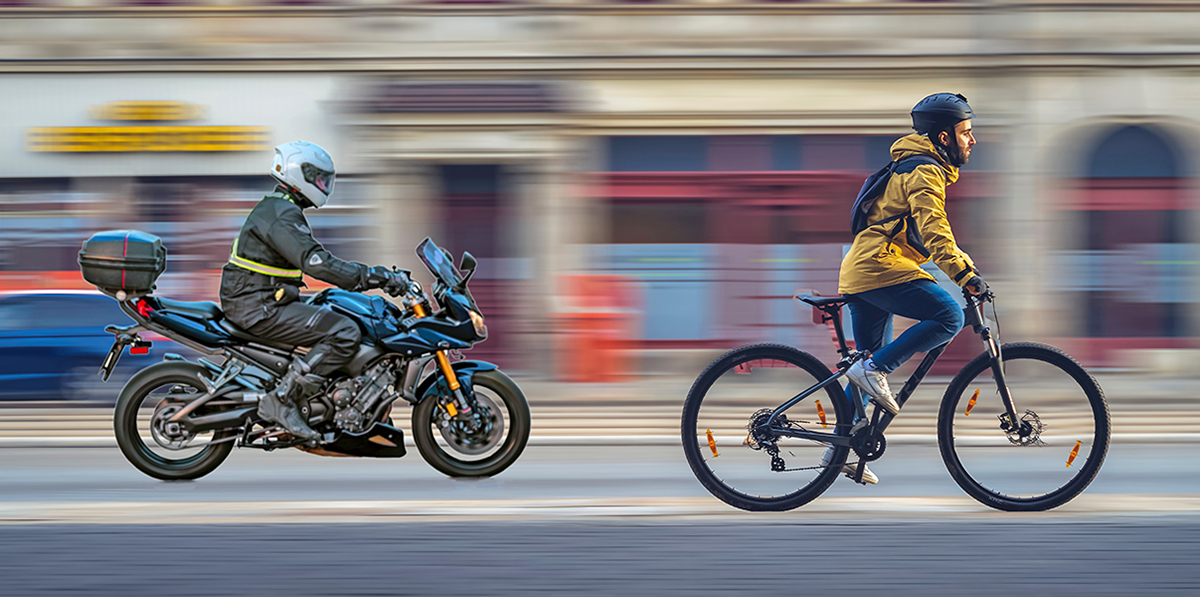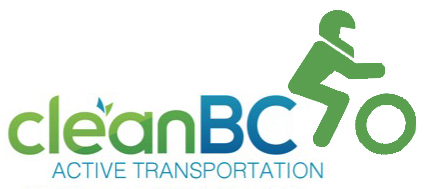The Powered Two-Wheeler Part of Active Transportation

Motorcycle and bicycle commuters actively share the road.
British Columbia’s “CleanBC” initiative has “Active Transportation” as part of the solution for a cleaner and more “active” transportation future.
CleanBC identifies initiatives and priorities to help grow a low-carbon economy that creates opportunities for all British Columbians while protecting the air, land, and water. When it comes to transportation, that means:

- Providing cleaner option
- Helping to reduce gridlock
- Reducing carbon pollution
CleanBC argues for building a sustainable transportation system – one that may persuade people out of their cars and one that is accessible for everyone. By making it easier for people to commute to work or school using active transportation methods, we cut down on carbon pollution and help make life better for people.
There is a strong case – proven on a global scale – for powered two-wheel options being a promotable partner in Active Transportation strategies and programs.
As rising fuel prices push people to review their daily transportation, powered-two wheel options come into the conversation for good reason. They :
- Get people out of cars, reducing road congestion.
- Offer better fuel economy
- Produce less GHG emissions than cars. (Plus, there’s electric models.)
- Are a viable option for longer commutes, where bicycles are unrealistic.
- Offer larger cargo limits than bicycles
- Use less space and are less wear on roadways.
In addition, and to the title of this post, there is mounting evidence motorcycles are a good Active Transportation option.
The Motorcycle Industry Association (MCIA) in the UK, recently published ”Journey to a Brighter Destination” document in support of active motorcycling. The U.K. Auto-Cycle Union and Mental Health Bikers have also supported the publication.
One of the key points: “Motorcycling is good for you, physically and mentally. It’s more involving than other sedentary forms of motorised transport, so is a more active form of travel that gives considerable benefits to a rider’s overall well-being, awareness, and skill level.”
When you ride a motorcycle, you use lots of different muscles to keep the bike upright and generate the right turning forces through corners and bends. Staying fit reduces your chances of becoming distracted when active, and a distracted rider is one who’s heading for a fall.
Riding a motorcycle is always an engaged, visceral experience. (That’s how you survive) Naturally, the degree of physical benefit is indexed to the type and size of your ride, as well as how often you ride, but the basics apply to everyone. There is even research to show the extra concentration needed to successfully operate a motorcycle contributes to higher general levels of brain function.
In summary, let’s think bigger. Be more inclusive. Powered two-wheelers are an asset, are an included part of any Vision Zero conversation wanting a safer transportation system for all vulnerable road users. It’s essential to include motorcycles and scooters in planning and safety messaging if any real progress is to be made. Globally, they are seen as part of the solution.
There could even be an additional version of the CleanBC logo:

